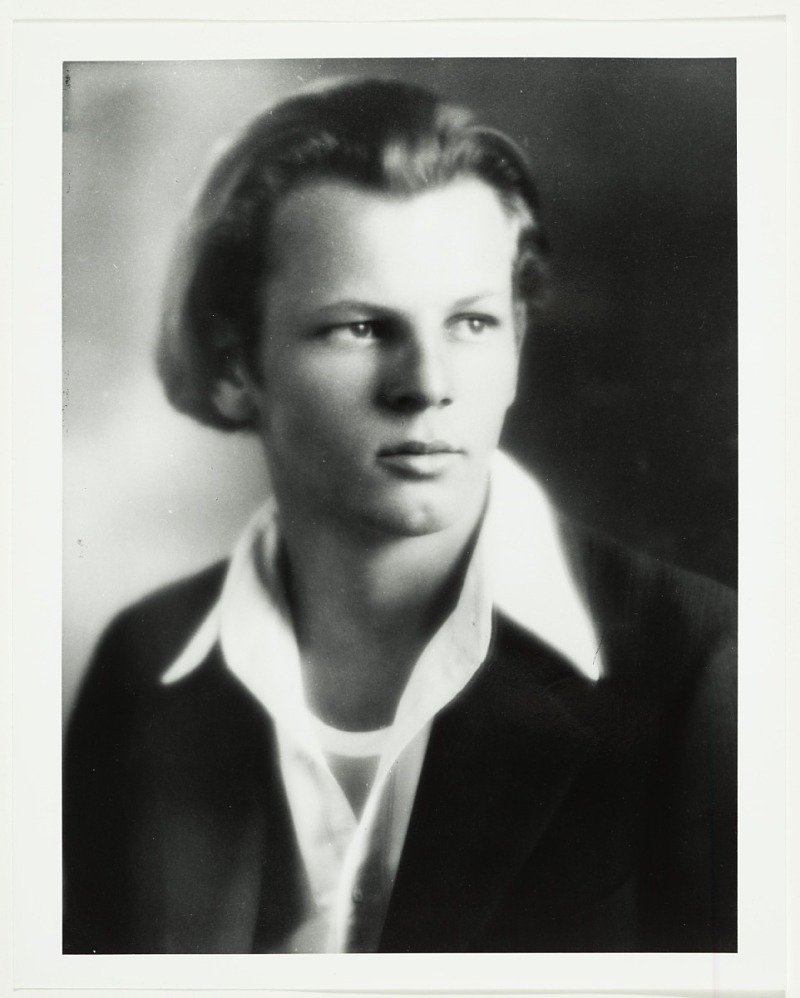Jackson Pollock, born in 1912, was an American painter and a prominent figure in the abstract expressionist movement. He was well-known for his unique style of drip painting, which gained him widespread recognition and fame. His innovative techniques and revolutionary approach to art have made him one of the most influential artists of the 20th century. Pollock’s works are characterized by their spontaneity, energy, and complexity, which continue to captivate and inspire people all around the world.
Pollock’s early life was marked by personal struggles and a search for identity. He was raised in a family of artists, and as a young man, he struggled with alcoholism and mental health issues. Despite these challenges, Pollock’s passion for art never wavered. He found solace in painting, using it as a means to express his emotions and inner turmoil. Pollock’s turbulent life and intense personality would later influence the development of his unique artistic style.
In the 1940s, Pollock’s career began to take off. He received critical acclaim for his work, which was seen as groundbreaking and innovative. Pollock’s rise to fame was meteoric, and he quickly became one of the leading figures in the American art scene. His contributions to the world of modern art are immense, and this article aims to explore the impact of his unique style and vision on the art world.

The Unique Style of Jackson Pollock’s Art
Jackson Pollock’s art is characterized by its unique, abstract style. Unlike traditional artists who relied on carefully planned compositions, Pollock’s approach was entirely spontaneous and unplanned. He believed that art should be an expression of the unconscious mind, and to achieve this, he developed a technique known as “action painting.” This method involved dripping, pouring, and splattering paint onto a canvas, which was often laid on the floor instead of being mounted on an easel.
Pollock’s innovative technique allowed him to create a sense of movement and energy in his paintings. He would often use his entire body to manipulate the paint, moving around the canvas in a rhythmic, almost dance-like manner. This full-body involvement in the painting process resulted in dynamic, gestural works that were a stark contrast to the more restrained, traditional styles of the time.
The unique style of Jackson Pollock’s art allowed him to break free from the constraints of traditional painting and explore new possibilities in the realm of abstraction. His works are characterized by their complexity, depth, and visual impact, which has made them some of the most recognizable and iconic pieces in the history of modern art.
The Evolution of Paintings by Jackson Pollock
The evolution of paintings by Jackson Pollock can be traced through several distinct phases. In his early years, Pollock was heavily influenced by artists such as Pablo Picasso and the Mexican muralists, which is evident in his figurative and surrealist works from this period. However, it was not until the 1940s that Pollock began to develop his signature style.
During this time, Pollock experimented with a variety of techniques and materials, gradually moving away from traditional methods of painting. He began to incorporate elements of automatism and chance into his work, which eventually led to the development of his famous drip technique. This new approach allowed Pollock to create works that were entirely abstract, with no recognizable subject matter or focal point.
In the late 1940s and early 1950s, Pollock’s art reached its peak, and he produced some of his most famous and iconic works during this time. These paintings, such as “Number 1A, 1948” and “Autumn Rhythm (Number 30),” are characterized by their dense, intricate layers of paint and their large-scale format. The complexity and visual impact of these works have made them some of the most highly regarded and valuable pieces in the history of modern art.
Techniques and Materials Used in Jackson Pollock Art
One of the defining features of Jackson Pollock’s art is his innovative use of techniques and materials. Pollock’s unique approach to painting was rooted in his desire to break free from traditional artistic conventions and explore new possibilities in the realm of abstraction. By experimenting with various methods and mediums, Pollock was able to create works that were unlike anything that had been seen before.
Pollock’s most famous technique, known as “action painting” or “drip painting,” involved dripping, pouring, and splattering paint onto the canvas. To achieve this effect, Pollock would often use unconventional tools such as sticks, trowels, and even his own hands, rather than relying on traditional brushes. This allowed him to create a sense of movement and energy in his paintings that was entirely unique.
In addition to his innovative techniques, Pollock also experimented with a wide range of materials in his art. He was known to use household enamel paints, which were more fluid and easier to work with than traditional artist’s oils. Pollock also incorporated various non-traditional materials into his works, such as aluminum paint, sand, and broken glass, which added texture and depth to his paintings.

The Influence of Jackson Pollock on Other Artists
The influence of Jackson Pollock on other artists cannot be overstated. His innovative techniques and unique approach to painting had a profound impact on the art world, inspiring a new generation of artists to push the boundaries of what was considered possible in the realm of abstraction. Pollock’s groundbreaking work paved the way for the development of various art movements, such as abstract expressionism, action painting, and color field painting.
Pollock’s approach to painting, which prioritized process and spontaneity over traditional composition, resonated with many artists who were seeking to redefine the role of art in the post-war era. His work inspired artists such as Willem de Kooning, Mark Rothko, and Helen Frankenthaler, who went on to develop their own unique styles and contribute to the evolution of modern art.
By challenging the conventions of traditional painting and exploring new possibilities in abstraction, Jackson Pollock played a crucial role in shaping the course of art history. His influence can still be seen today, as contemporary artists continue to draw inspiration from his innovative techniques and groundbreaking work.
The Role of Jackson Pollock in the Abstract Expressionism Movement
Jackson Pollock played a central role in the development of the abstract expressionism movement, which emerged in the United States in the 1940s and 1950s. This movement was characterized by its focus on the expressive potential of abstraction and its rejection of traditional artistic conventions. Pollock’s unique approach to painting, which emphasized process and spontaneity, was a defining feature of abstract expressionism and helped to establish it as a major force in the art world.
Pollock’s work exemplified many of the key principles of abstract expressionism, such as the use of gestural techniques, the importance of the artist’s individual expression, and the exploration of the unconscious mind. His innovative drip paintings, which were created through a process of action and chance, demonstrated the potential of abstraction to convey emotion and energy, and challenged the notion that art should be representational.
In addition to his contributions to the development of abstract expressionism, Pollock also played a key role in establishing the movement’s reputation and international prominence. His work attracted widespread attention and critical acclaim, and he quickly became one of the leading figures in the American art scene. By the mid-1950s, abstract expressionism had gained recognition as the first truly American art movement, and Pollock’s work was central to its success.
The Impact of Jackson Pollock’s Art on the Modern Art World
The impact of Jackson Pollock’s art on the modern art world is immense. His revolutionary approach to painting, which prioritized process and spontaneity over traditional composition, changed the way that artists approached their work and opened up new possibilities in the realm of abstraction. Pollock’s innovative techniques and unique vision helped to redefine the role of art in the post-war era, and his influence can still be seen in the work of countless artists today.
In addition to his contributions to the development of abstract expressionism, Pollock’s art also played a crucial role in shaping the course of art history. His work challenged the conventions of traditional painting and inspired a new generation of artists to explore the expressive potential of abstraction. This, in turn, paved the way for the emergence of various art movements, such as action painting and color field painting, which continue to influence the art world today.
The enduring appeal of Jackson Pollock’s art lies in its ability to captivate and inspire. His works are characterized by their complexity, depth, and visual impact, which continue to resonate with audiences all around the world. Pollock’s unique style and vision have made him one of the most influential and iconic artists of the 20th century, and his impact on the modern art world is undeniable.
The Legacy of Jackson Pollock’s Vision
The legacy of Jackson Pollock’s vision can be seen in the enduring popularity of his work and the continued influence of his ideas on contemporary art. Pollock’s groundbreaking approach to painting, which emphasized process and spontaneity, has become a touchstone for artists seeking to break free from traditional artistic conventions and explore new possibilities in the realm of abstraction.
Pollock’s unique style and innovative techniques have also had a lasting impact on the way that art is created, viewed, and understood. His work has inspired countless artists to push the boundaries of their own practice and challenge the status quo, resulting in a rich and diverse body of work that continues to captivate audiences all around the world.
In addition to his artistic legacy, Pollock’s life and career have also become the subject of numerous books, films, and exhibitions, which have helped to raise awareness of his work and ensure that his unique vision continues to inspire future generations of artists.
Famous Paintings by Jackson Pollock and Their Significance
Jackson Pollock produced many iconic and significant paintings throughout his career, which have come to define his unique style and vision. Some of his most famous works include:
- “Number 1A, 1948” – This large-scale painting, created using Pollock’s signature drip technique, is considered one of the finest examples of his abstract expressionist style. Its complex layers of paint and dynamic composition exemplify Pollock’s innovative approach to painting and his ability to convey emotion and energy through abstraction.
- “Autumn Rhythm (Number 30)” – Created in 1950, this painting is characterized by its intricate, gestural lines and its sense of movement and energy. The work is a testament to Pollock’s mastery of his drip technique and his ability to create visually captivating compositions that explore the expressive potential of abstraction.
- “Blue Poles (Number 11, 1952)” – This painting, which features bold, vertical lines that appear to be supported by “poles,” is one of Pollock’s most famous and controversial works. Its large scale and powerful visual impact have made it an enduring symbol of Pollock’s artistic vision and his contributions to the world of modern art.
The Enduring Appeal of Jackson Pollock’s Art
In conclusion, Jackson Pollock’s impact on the modern art world is undeniable. His unique style, innovative techniques, and revolutionary approach to painting have made him one of the most influential and iconic artists of the 20th century. Pollock’s contributions to the development of abstract expressionism, color field painting, and other art movements have helped to shape the course of art history and continue to inspire countless artists today.
Pollock’s enduring appeal lies in his ability to capture and convey emotion and energy through abstraction. His works are characterized by their complexity, depth, and visual impact, which continue to captivate and inspire audiences all around the world. Pollock’s legacy is a testament to the power of art to challenge conventions, break boundaries, and inspire new ways of thinking about the world.
If you want to experience the impact of Jackson Pollock’s art for yourself, there are many ways to do so. You can visit one of the many museums and galleries that feature his work, or explore reproductions and prints of his paintings online. Whether you are an artist, art lover, or simply curious about the world of modern art, Jackson Pollock’s unique style and vision are sure to leave a lasting impression.























